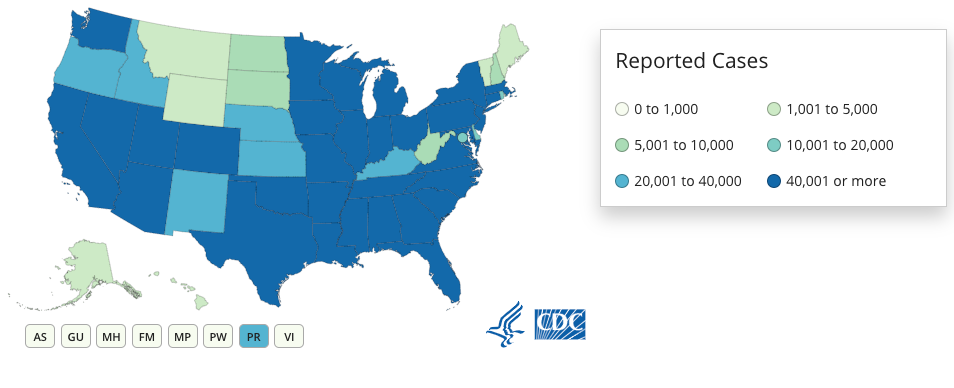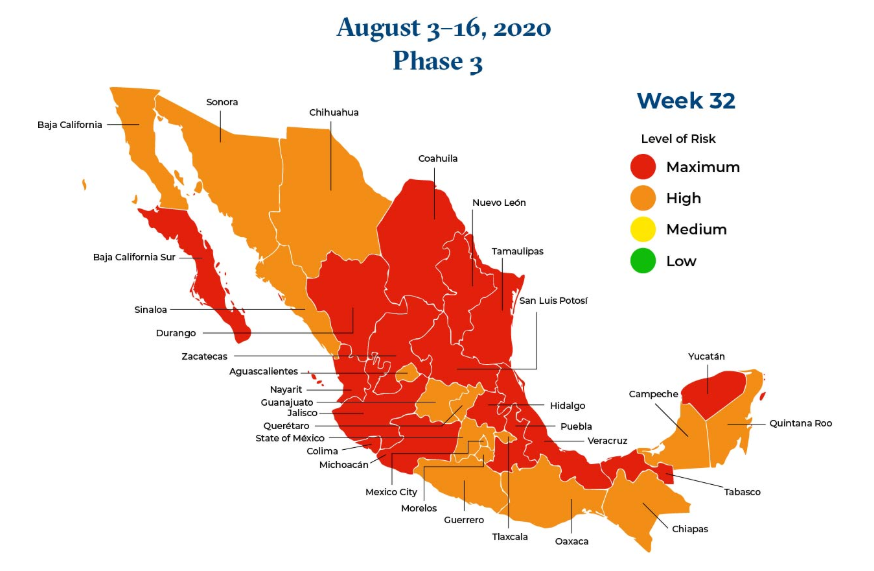COVID-19 Pandemic - North America

BY: DEV DWIVEDI
The following article is a brief description of the current predicament faced in the North American region of the world with regards to the current COVID-19 Pandemic. All of the sources utilized to formulate this brief analysis have been referenced towards the end of the page.
Since the rise of this easily communicable disease, the COVID-19 pandemic has infected over a total of 5,969,285 people in North America with the United States leading as the nation with over a total of 5,077,556 people infected throughout the entirety of the pandemic, the most to be infected in a country throughout the world. Consequently, the impact of the coronavirus has been detrimental to several North American countries as they have either been forced to enter a complete lockdown state or institute provisions that will significantly restrict the ability of the public to travel freely outdoors in an effort to take a proactive and effective approach rather than a reactive and unsuccessful approach. However, this accelerating growth of the COVID-19 pandemic has only been surprisingly witnessed within the United States of America itself. Neighboring nations such as Mexico and Canada have been capable of minimizing the rapid transmission of the coronavirus with Mexico having a total of 462,690 cases and Canada having a total of 118,757 cases. The other remaining countries in North America have been observed to have just under a total of 80,000 cases with a majority only experiencing under a total of 1,000 cases such as Jamaica, Aruba, and Guadeloupe to name a few.
Though the cause for the slow spread of the virus is not evident, scientists theorize that it may be due to the extreme temperatures found in various locations of North America with the uppermost portions being in much colder environments and the lowermost portions being in much warmer environments. This could serve as an explanation for the rapid spread of the virus in the United States as environmental conditions tend to be less extreme.
Despite the varying rate of the transmission of the COVID-19 virus, unanimous agreements have been set forth by the United States, Mexico, and Canada in an effort to anticipate future challenges and share their practices to effectively and proactively respond to any future issues that may arise while combating this novel virus. Under this agreement and partnership, these North American countries enabled tens of thousands of citizens in these countries to return to their homes from across the world despite the current predicament faced with travel, reinforced the maintenance and provisions of medical resources to strengthen public health care systems, and ensured that essential workers are able to continue working in secure conditions. These North American partners have even agreed on collaborating together on mitigating the consequences of border closures and restricted/minimized transportation, striving to develop affordable, accessible, and quality therapeutic treatment options, diagnostics, and vaccines, and restarting the global economy as they begin to re-open their countries.
Aside from being a public health emergency across North America, and the world for that matter, the virus has also been noted to cause detriments to the economies of several nations as they have experienced massive unemployment and uncertainty in their financial stability. Therefore, if the current crisis’s magnitude increments, factors such as multiple bankruptcies, the hold on pursuits for certain careers, and unintended repercussions of border restrictions may further impair the current circumstance of the economy.
Undoubtedly, when evaluating the overall extent of the effects of the COVID-19 pandemic on the entirety of North America, the crisis is evidently more prevalent in the United States of America than in any other country within the region. Considering this, President Trump and other national leaders are striving to compile their resources to lead a united and effective approach to combat, minimize, and eliminate the coronavirus pandemic. Hopefully, such a result will be achieved in the near future, as the world unites to overcome the magnitude of this health crisis.
Image 1 Source: Center of Disease Control and Prevention, “Cases in the US”
Image 2 Source: Lexology, “Mexico’s COVID-19 Traffic Light Monitoring System: News for August 3-16, 2020”
Image 3 Source: Public Health Agency of Canada, Statistics Canada and Natural Resources Canada, “Canada COVID-19 Situational Awareness Dashboard”



References
- Center of Disease Control and Prevention. (2020, August 7). Cases in the U.S. Retrieved August 08, 2020, from https://www.cdc.gov/coronavirus/2019-ncov/cases-updates/cases-in-us.html
- Coronavirus Cases:. (n.d.). Retrieved August 08, 2020, from https://www.worldometers.info/coronavirus/?utm_campaign=homeAdUOA%3F
- Haley, J. (2020, April 13). COVID-19 and the Threat to the North American Economy. Retrieved August 08, 2020, from https://www.wilsoncenter.org/article/covid-19-and-threat-north-american-economy
- North American Cooperation on COVID-19 – United States Department of State. (2020, May 12). Retrieved August 08, 2020, from https://www.state.gov/north-american-cooperation-on-covid-19/
- Public Health Agency of Canada, Statistics Canada and Natural Resources Canada. (2020, July 8). Canada COVID-19 Situational Awareness Dashboard. Retrieved August 08, 2020, from https://experience.arcgis.com/experience/2f1a13ca0b29422f9b34660f0b705043/
- Straulino-Rodriguez, P. (2020, August 04). Mexico’s COVID-19 Traffic Light Monitoring System: News for August 3-16, 2020. Retrieved August 08, 2020, from https://www.lexology.com/library/detail.aspx?g=0e386720-0496-4ad0-8c75-c04e10815f5a
